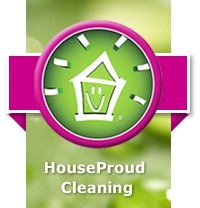
The pandemic provided challenges and opportunities. There is more to come as we move through the economic recovery cycle.
There is a massive opportunity for businesses with a clear pricing strategy. A successful pricing strategy captures customers with different needs, at different price points.
Thereby maximising profit and customer experience at the same time. The trouble is that there so much conflicting information out there. To make matters worse, there are many misconceptions and anecdotes out there.
“Pricing is an art, not a science.”
“Price at what the market can bear.”
“You must beat your competitors’ price.”
“My industry is ultra-price-sensitive, I must lower prices.”
“If you raise your prices your existing customers will leave.”
Whilst some of these anecdotes may be true, in rare cases, for most they lead to poor pricing decisions. There is no “one size fits all” every business is different.
In fact, recent studies show people don’t buy on price, they buy on value. Price is only one part of the value equation.
The reality is that people measure value based on, price, quality, speed, and service. This is true for business to consumer and business to business. We are all hardwired to look for value.
This is where a value-based pricing model makes a world of difference.
A pricing strategy that includes value-based pricing provides the most profitable outcomes. The focus on customer value also keeps your customers happy.
The proof is in the pudding. A commercial cleaning client recently installed value-based pricing. We increased profit on new business by 100 per cent and increased lead conversion by 10 per cent.
The key is to have both a value-based pricing model and a clear pricing strategy.
Let me break these two concepts down further for you:
Value-based pricing model
Value-based pricing starts with your customer. First, you must understand what your customer truly values. Without this, you cannot have an effective value-based pricing model.
Earlier this week I asked a business owner what their customers value most, he said “a lower price”. On further investigation, he had a high rate of repeat business (over 80 per cent) and is not the cheapest.
“If they only want a lower price, why then, do they keep coming back to you?” – the answer to this question is the value you bring your customers.
The key is not price but value. Once you understand your customer value proposition you are 90 per cent there.
I love to install psychology-based pricing models. I use three levels of service at different price points to appeal to human psychological biases.
- A basic low-cost service at a low price. I call this the “stay out of jail” service. It’s basic, just enough to keep you out of trouble, but doesn’t have bells and whistles. This includes only one or two of the items your customers value. Some customers will want this and that is fine, maybe they’ll upgrade in the future, maybe not. They are still good customers with good profit.
- A value package – this adds more of the things your customers’ value. You may add extra certainty, guarantees, services, reliability. These are things that add significant value to the customer without much extra cost to you. This package is loaded with customer value. Most customers buy this package, increasing your profitability.
- A super service “Elite” package – this has all the bells and whistles. It’s designed for those that only want the “best of the best” and are willing to pay for it. You may not sell many of these but they are highly profitable.
Having options opens up a conversation about your customer’s needs. You can make an honest recommendation. You are less like to lose a customer over price because you are giving them options.
If you only offer one price point it’s a take-it-or-leave message. With three price points, the message is “we are here to fit your needs”.
Note: It’s important to have a robust cost analysis model when developing your prices. This ensures you get the right profitability at each price point. This ensures you continue to turn a good profit even if the mix of services changes.
Pricing strategy
Oh no not another strategy – boring!
Bear with me, I’m hoping that I can change your mind on this one.
Your pricing strategy will help you align your marketing and sales processes. Your value message must be loud and clear. The idea is to talk about value not price.
That value needs to be front and center. The best way to show this is through a real story from earlier this week:
I was analysing the pricing of three competitors for a client. All three had online pricing but each pricing strategy was very different.
- One had a super low price with lots of add-ons (personally my initial reaction was this will cost me more in the end).
- The second was a well-oiled website, pricing and extras were transparent, but there was also a lot of fine print.
- The third was competitive on price, although a little pricier. It lacked information on extra costs. I called to find out… To my pleasant surprise, they had no extra costs!
All three businesses focused on price rather than value. Business three had a “no extra costs” pricing strategy but it was not shown in the sales process. If there was a statement like “Best Value. Competitors charge extras… WE DON’T!” – I would have immediately clicked ‘buy now’.
Brad Horan is director of Lucrature Business Profit Enhancement. He can be reached at bhoran@lucrature.com
This article first appeared in the July/August issue of INCLEAN magazine.
Comment below to have your say on this story.
If you have a news story or tip-off, get in touch at info@3.106.117.80.
Sign up to INCLEAN’s newsletter.




